There is something magical about a great bowl of Japanese ramen noodle soup. It’s absolutely wonderful. If you’ve never had good ramen go out and get some.
Just do it. Today. Noodles. Broth. Pork. Egg. Wow. If the noodles are the backbone, the tonkotsu ramen broth is the heart and soul.
This is the first step towards a good bowl of tonkotsu ramen
This is a descent into madness. I’m making the tonkotsu ramen broth from scratch. I’m cooking pork belly. I now know the difference between the 7 minute and 7 1/2 minute egg.
I’ve figured out how to make spaghettini into the alkalinated noodles. I’ve replicated the Momofuku pork belly. Got a lesson in their kitchen for that. For real. The rest of the tonkotsu ramen recipe is here.
All this work so I can maybe come close to the $13.00 bowl of ramen at my local ramen joint. Crazy. Follow me only if you are crazy too. Or you just love ramen as much as I do. Turns out it’s pretty easy. And it’s delicious. Good living.
Making tonkotsu ramen broth is a real eye opener. If you know how to make classic French meat stocks forget everything you know. This broth is cooked at a roiling boil for 12 hours.
A rolling boil. The absolute antithesis of the French technique.
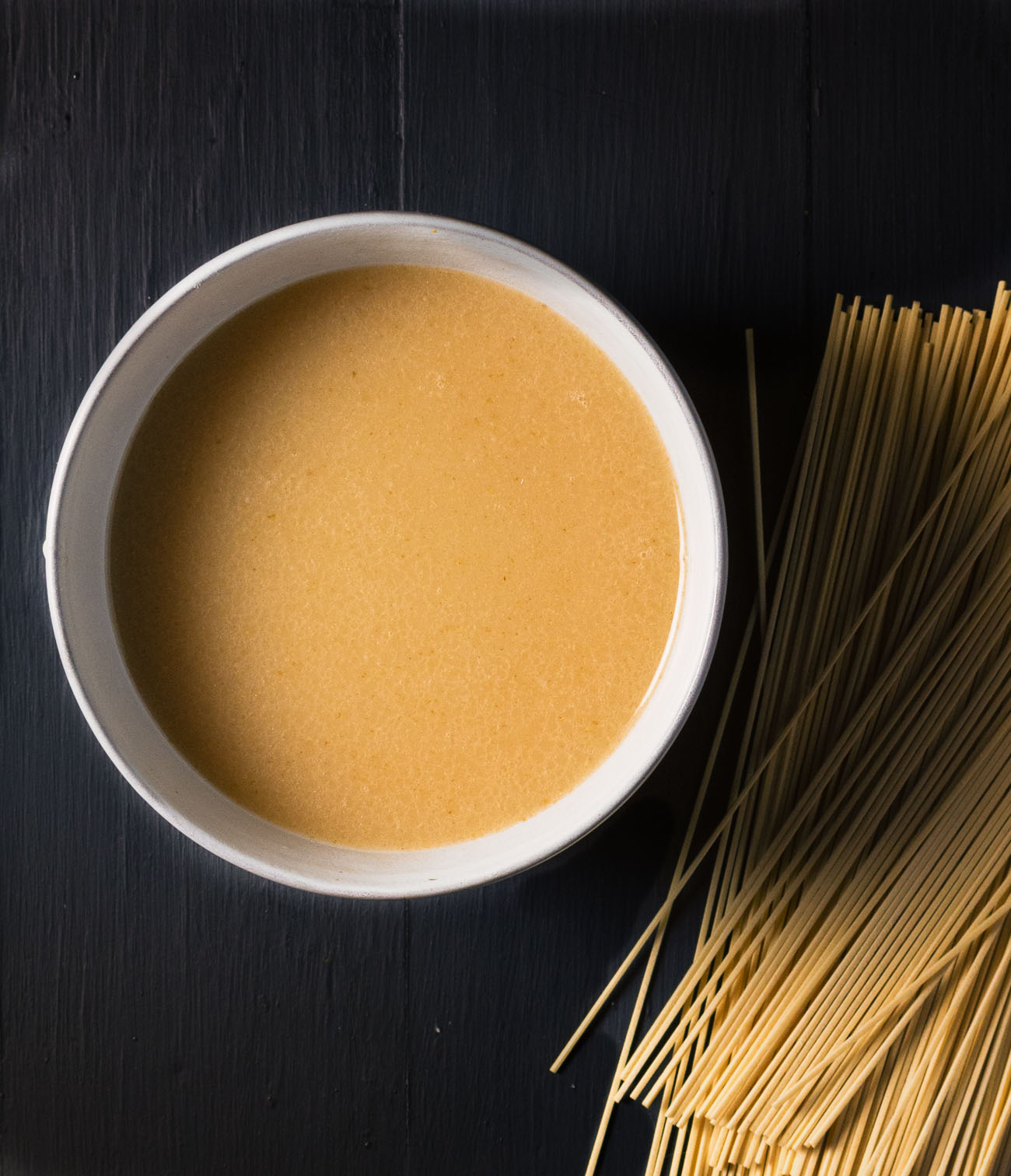
The bones of the matter
I like pork neck bones for tonkotsu broth. It’s not make or break though. You just want bones with a bit of meat on them. Adds flavour.
And you probably don’t want to pay a fortune for them. At least I don’t. Anything that fits that description will work.
I go to my local Asian grocer. Buy neck bones. They always have them. I know they work. And they are cheap. Perfect.
Clean bones is the key to a good tonkotsu ramen broth
There’s a lot of Asian technique here that you don’t see in classic western cooking. Blanching the bones is a big one.
And a really good one. Add all the bones to a pot. Bring to a boil. Cook for about 5 minutes. Then dump it all out and rinse the bones.
I’m not a fan of putting flavour down the sink. But in this case it’s genius. Doesn’t make a difference to the end flavour.
But it does get rid of all that muck floating on the surface of the stock. Muck that would get boiled into the stock. Muck that would likely ruin the broth. Did I mention this is genius?
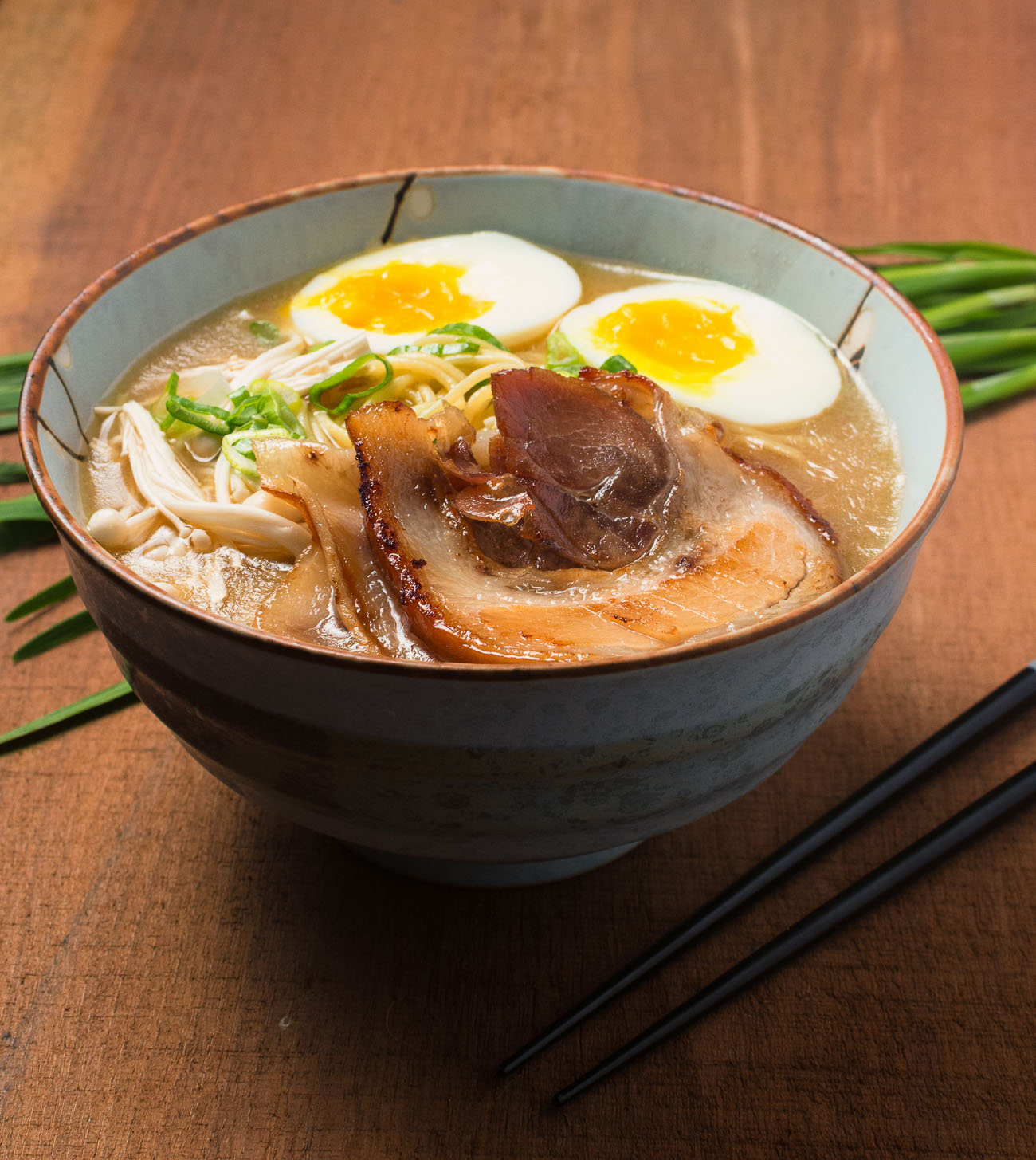
A rolling boil makes a magical broth
Something happens when you cook pork bones at a rolling boil. All the gelatin and fat and goodness comes out of the bones and turns the stock that milky white colour.
If nothing else, this experience was absolutely fascinating. Just make sure you keep adding water to keep the bones submerged.
Don’t use a slow cooker for this. Won’t work. People have tried. They have failed. Read the comments below…
To cover or not to cover?
You can find videos on youtube of Japanese ramen joints making their broth. Huge pots of stock boiling away. They don’t cover their pots. But they have staff in the kitchen full time.
You can try it uncovered if you are planning to hang out in the kitchen all day. Your call. I don’t though. A loosely covered lid keeps some of the evaporation in check.
You still need to pay attention though. You are maintaining a rolling boil for 12 hours. Covered or not it can boil dry. And that’s a whole world of hurt nobody needs.
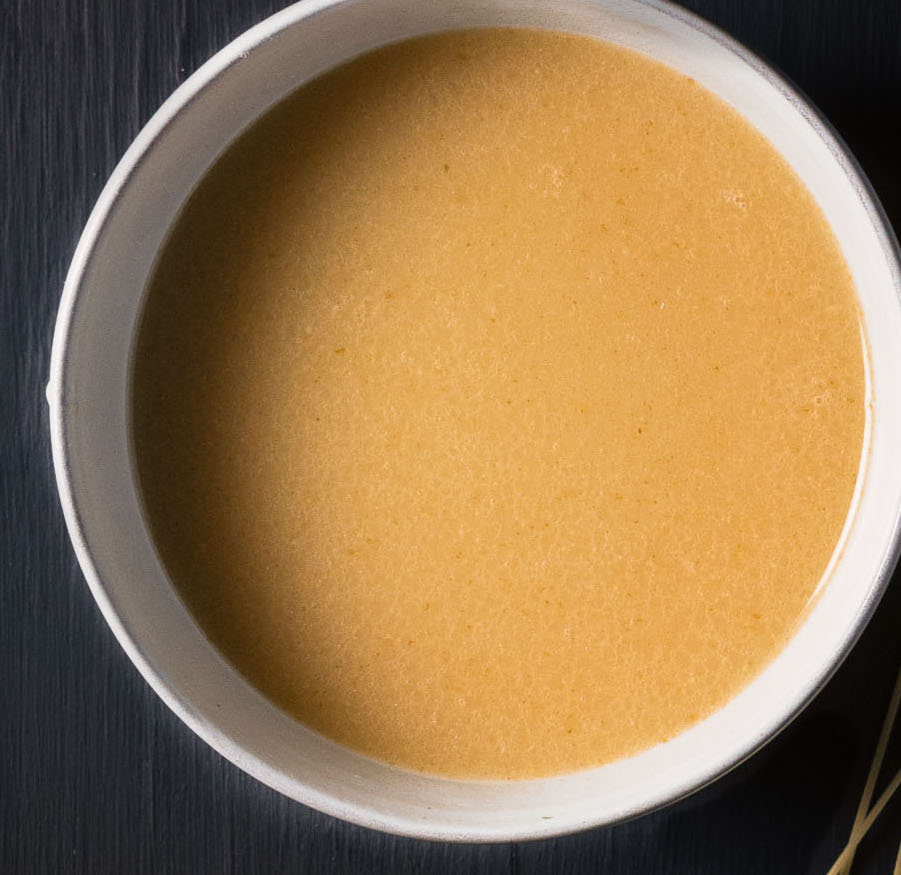
No more secrets
This ramen broth is delicious. This part is nailed. Nothing to it really. Just need to follow the recipe. No secrets here. Not anymore. The tonkotsu ramen turned out pretty amazing too.
This is base. The foundation to a great bowl of ramen. You can make just about any tonkotsu style ramen with it. Next step is the tare. That’s what pushes it in different directions. Shio. Shoyu. Miso. Your choice.
Tonkotsu ramen broth. Not the quickest way to make something great. But so totally worth it.
tonkotsu ramen broth at home
Ingredients
- 6 lbs pork bones with a little meat on them. Pork neck bones work well.
- 4 oz white mushrooms sliced
- 1 onion peeled and halved
Instructions
- Place the pork bones in a large stock pot and cover with cold water.
- Bring to a rolling boil over medium high heat. At this point a huge mess of scum will form.
- Remove from heat. Dump the water and carefully rinse all the bones under cold running water.
- Return the bones to the stock pot. Cover the bones with cold water and bring to a rolling boil.
- Add the mushroom and onion and maintain a rolling boil for 12 hours, replenishing the water along the way. You want to keep the bones under water the whole time. It’s best to cover the pot for this or you’ll be adding water every 30 minutes.
- After 12 hours, remove the stock from the heat and cool slightly. Remove the bones with a slotted spoon and strain the stock.
- The stock will keep in the refrigerator for 2-3 days or can be frozen at this point.
- The broth is flavoured by the tare of your choice. There are two good one’s in the tonkotsu ramen recipe.


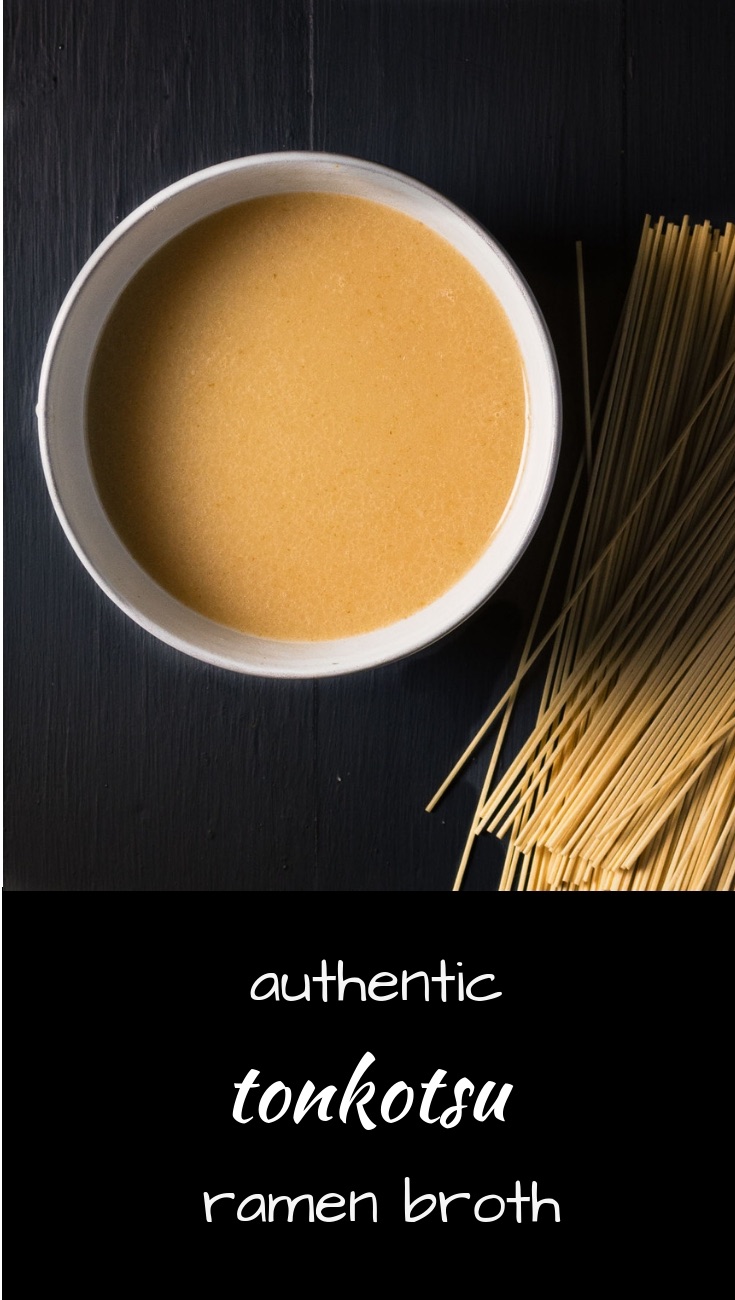
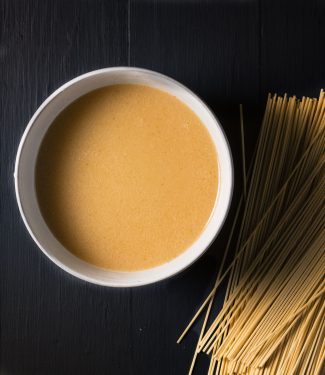
When topping up the water, do you use cold or ore-boiled water?
I typically don’t let it get to far before I top it up so I find it doesn’t matter that much. If you need to add a fair bit at once hot/boiling is better.
Trying this on a whim and wasn’t smart about what bones I bought. Only snagged a measly 2lb spare rib pork with bone in. Obviously this isn’t going to be enough and I have had to add water every 30mins or so to keep them covered.
It’s been about 6 hrs at this point and the broth is slightly flavored so hoping another 6 will really kick it up. Though I’m expecting to be left with just enough for 1 person which is fine, that’s my fault.
Here’s hoping it works even with less bone available! Will update you to see how it turns out!
Good luck! I think if you concentrate it enough it will still be tasty. Just shoot for a single portion at the end as you have said.
It came out exactly as you said. Few things I did that I should not have:
1) Tried to make my own tare because I didn’t have access to everything needed. Ended up adding too much fat content and it became too heavy.
2) ~8hrs added a chicken stock cube cause it still wasn’t as flavorful as I wanted it. I dunno what it is about that 10-12hr mark but something magical happens.
All in all a great recipe, just as advice to others, get the biggest tallest pot you can so you can boil it down instead of having to add. Dont worry about adding water. It will not “water it down” there’s just too much flavor to actually do that.
I came across your site looking for a tonkotsu broth recipe (which I am currently cooking) but you have so many great recipes! This is a general comment… one thing I really LOVE about your site is the slider functionality on serving size to alter the ingredient quantities relative to number of servings. Brilliant! But I am in Australia, and used to metric measurements, not pounds and ounces, so I need to go to another site to get the conversions. Have you thought of trying to add a similar functionality to enable that conversion within your site? That would be super helpful, thanks!
Thank you very much for saying. I am delighted that you found me.
I haven’t seen metric/imperial converter but now that you mention it I really should look harder as it is something that many would love to see I am sure.
FWIW I am in Canada and switch back and forth. I use 500g to the pound as a rough estimate (454 when it really matters). Cups where it doesn’t need to be super precise I use 250ml (237ml actual) – 4 cups to the litre give or take and 30ml to the ounce (28 actual). Until I find a good converter I hope this helps…
Can this broth be pressure canned?
I’m sorry. I have no experience pressure canning this broth. I simply freeze it and pull it out as required.
Check the USDA Master Food Preservers’ office or the Ball Canning site.
It takes about an hour and half under pressure. But it will be shelf stable done properly. Good luck.
So having bought supermarket dried ramen noodles, is there any way to resurrect them? Worth trying to alkalise them with some baking soda?
Instant ramen noodles you mean? Be a shame to waste all the work that goes into this broth. Better off to try baking soda with spaghettini.
When you say pork bones, can you buy bone-in pork meat (like ribs, for instance) and just remove the meat? Do you leave the meat and fat on?
This one comes up enough that I’ve updated the post. I like pork neck bones for tonkotsu ramen broth. They are cheap and they have a bit of meat on them. I get them at Asian grocers.
Ribs would be a very expensive way to make pork stock. Likely too fatty as well. And deboned ribs would take a lot of ribs I would think. You’d be eating rib meat for a long time:-)
So what I went with just now was pork neck (3 packs), pork tail (1 pack) and pork trotted (1 pack).
I put them in the stock as is. My question was really more if I needed to removed excess meat and fat and use literally only bones, but it appears if you are using pork necks (and don’t state that as a step) that you just throw them in as is with meat and fat.
Hopefully I have this correct!
You do. Never occurred to me that anyone would try to pick all the good stuff from the bones. I’ve updated the recipe. You have a great mix of bones. You’re going to get a fine product!
Thank you!
Any suggestion on what to do with the pork neck bones afterward?
They should be completely tasteless at the end of cooking. If there is meat attached and it still tastes of something you could whip up a little stew or stir fry but really it should taste of nothing after 12 hours…
Also, mine made like 16 cups of broth, did I add too much water?
Maybe a little. 8-10 cups is about right but there are error bars on this recipe. If it tastes delicious you know you’re good.
Is there a way to save it? I only saved about 1/3 of the bones. Should I just put those in and boil until it reduces a bit?
I would think you could just reduce it without the bones. If you’ve extracted all the flavour from the bones it’s just a matter of concentrating it a bit.
I’m wanting to make a duck broth.
Would you alter anything in the recipe if using duck bones?
I’ve never tried that but it sounds good! Poultry tends to take less time to extract flavour so maybe check after 4-6 hours to see what you think?
What type of onion should I use? Assuming white, but want to be accurate.
Cooking onions. With the brown skin.
This is probably a silly question-but can bones from already cooked pork be used to make the broth? I am assuming this is the case with the chicken..
Not a silly question at all. I’ve never tried it but I would think it would be very close. I do make my chicken stock from cooked chicken bones all the time.
Hi Romain,
Thank you for the recipe, I’ve been looking for a nice slow broth to cook. Im not going for hard authenticity but good flavor & collagen, nor do I always have access to pork; do you think this could work with other bones (lamb, ox tail, etc) as well?
Thank you
Are you looking to make a tonkotsu style broth but with ox tail? I’ve never tried the hard rolling boil with beef. I typically go for a long, slow simmer to make a clear broth when I do ox tail – and then use it for pho.
I don’t have a 12 hour segment of time to do this. I’m going to try boiling for 6 hours, cooling, refrigerating overnight, and then bringing to a boil the next day for an additional 6 hours. Your thoughts?
If you have the room to refrigerate I don’t see any reason this wouldn’t work. I’ve never tried it so I can’t guarantee results.
Could you use pork rib bones for this?
Sure. Any pork bones should get you there. As long as you aren’t using rib bones pulled from your smoker that is. But it would take a lot of rib bones I would think…
I have a small carcass leftover from a whole pig roast that I wanted to use to make stock. Do you think this would work to make the tonkotsu broth?
If so, there’s still some residual meat and skin on the bone. Can I leave the meat and skin scraps on the bone or should I try to remove as much as possible?
Did the pig roast impart a smoke flavour? If not, then I would just follow the instructions to clean up the bones and go. Leave the meat on for more flavour. If there is smoke though you may get a different taste. Not sure if it would be good or bad but it would be different for sure.
I made this recipe on a rainy Sunday yesterday and it was PHENOMINAL. I have been craving good ramen for months… I used to travel out to San Francisco for work and got spoiled by all the great ramen out there. However, back home we don’t have anything even moderately decent. I followed the broth recipe exactly, for the ramen recipe I only used 1 lb of pork belly and halved the Ramen recipe. I also only let the ramen broth boil for 11 hours instead of 12, because it was nearing midnight and I was HUNGRY! Will definitely be making again and again
Nothing beats a good bowl of tonkotsu ramen. Great to hear. Thanks!
Can I use the pork bones that have bone marrow inside?
Yes. Absolutely.
I am so keen to make this recipe and broth, great for food prep and my boyfriend’s birthday is just around the corner so finding this post could not have come at a better time! I’m wondering if I double the recipe, obviously I will need more water, but would the time needed to bring the stock down to the right consistency / flavour increase or would around 12 hours still be right? Just want to make sure I start early enough in the day 🙂
Cheers, Mon
I’m glad you found it too! I’ve never tried such a big batch but I think it would just be a bigger pot, enough water to cover all the bones and the same amount of time. As always watch it closely so the water level stays up.
Super simple to follow. I’m making it today for my boyfriend with soup bones my dad gave me from his farm. I’m also throwing in a knob of Ginger and a few cloves garlic. Excited to see how this turns out
Hope he loves it!
I’m actually in the middle of making this tonkotsu broth. I started yesterday at 8pm and stopped at 1am because I had to sleep and go to work. I’m planning to start it at a rolling boil again when I come home (to try to achieve 12 hours in total in seperate times). Will that affect anything?
I think that will be fine. You don’t want to do it too many times though (break it up too much) because every time the stock goes through the 140F-40F range bacteria flourishes…